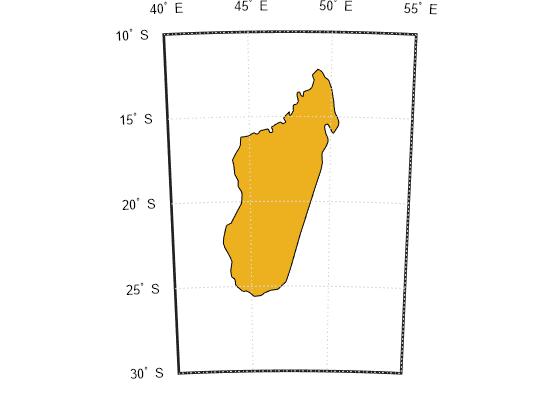bufferm
Buffer zones for latitude-longitude polygons
Syntax
[latb,lonb] = bufferm(lat,lon,bufwidth)
[latb,lonb] = bufferm(lat,lon,bufwidth,direction)
[latb,lonb] = bufferm(lat,lon,bufwidth,direction,npts)
Description
[latb,lonb] = bufferm(lat,lon,bufwidth) computes
the buffer zone around a line or polygon. If the vectors lat and lon,
in units of degrees, define a line, then latb and lonb define
a polygon that contains all the points that fall within a certain
distance, bufwidth, of the line. bufwidth is
a scalar specified in degrees of arc along the surface. If the vectors lat and lon define
a polygon, then latb and lonb define
a region that contains all the points exterior to the polygon that
fall within bufwidth of the polygon.
[latb,lonb] = bufferm(lat,lon,bufwidth,direction)
where direction specifies whether the buffer zone is inside
('in') or outside ('out') of the polygon. A third
option, 'outPlusInterior', returns the union of an exterior buffer (as
would be computed using 'out') with the interior of the polygon. If you
do not supply a direction value, bufferm uses
'out' as the default and returns a buffer zone outside the polygon.
If you supply 'in' as the direction value,
bufferm returns a buffer zone inside the polygon. If you are finding
the buffer zone around a line, 'out' is the only valid option.
[latb,lonb] = bufferm(lat,lon,bufwidth,direction,npts)
controls the number of points used to construct circles about the vertices of the polygon.
A larger number of points produces smoother buffers, but requires more time. If
npts is omitted, 13 points per circle are used.
Examples
Tips
Close all polygons before processing them with bufferm.
If a polygon is not closed, bufferm assumes it
is a line.






